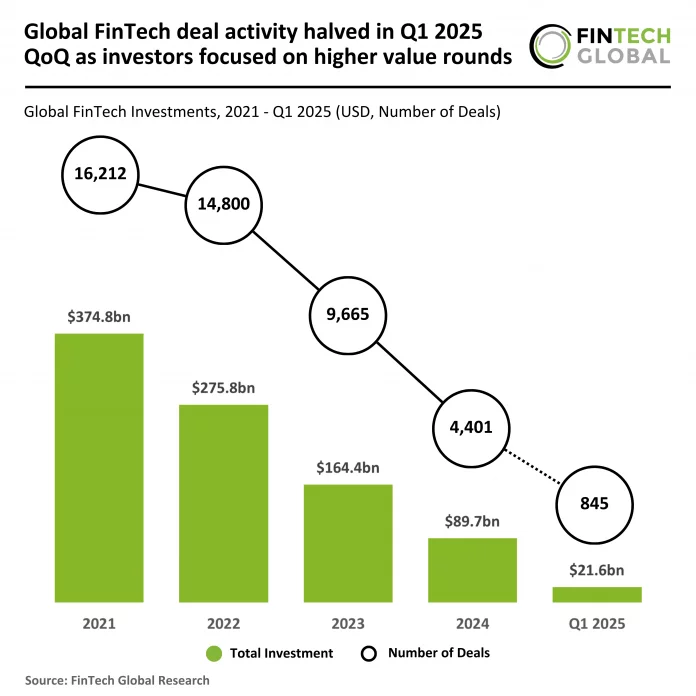1.1 Introduction
Africa’s fintech funding fell 45% in 2024, plunging from $1.6 billion in 2023 to just $857 million. This reflects a global fintech decline of 20% for the third consecutive year (GFTN, 2025; S&P Global, 2025). Yet there’s a silver lining: funding nearly tripled in H2 2024, signaling a shift toward fewer but higher-quality deals.
Investors are no longer betting on hype. They’re backing rigor, resilience, and research.
If you’re building or funding a fintech solution in Africa, it’s time to get decision-grade in your market research. Below, we unpack the three most critical mistakes fintech players make when designing or interpreting quantitative research—plus how to avoid them with actionable insights.
2. Pitfall 1: Not Defining the Problem Clearly
“The formulation of a problem is often more essential than its solution.” — Albert Einstein
A fintech startup may want to improve retention. But if their survey only asks about “overall satisfaction,” they miss out on why users churn. This is a classic case of unclear problem framing.
Real-World Illustration:
Imagine a fintech startup surveys all users on app satisfaction, but forgets to segment by inactive users. Their biggest churn driver—such as failed KYC verification—might never be surfaced without defining the problem from the start.
Solution:
- Start with: What decision must this research inform?
- Use a problem tree or logic model to trace the root causes and information gaps.
“One common issue in quant research is not asking enough people—or the right ones.” (GutCheck, 2019)
3. Pitfall 2: Choosing the Wrong Research Method
Many fintechs apply the wrong tools to answer critical business questions. For example, using a generic online survey to test price sensitivity misses subtle behavioral cues that conjoint analysis or A/B testing could uncover.
Real-World Example:
If a Ugandan micro-lending app used SMS surveys to set pricings, responses could came mainly from high-end users in urban Kampala—not their mass-market target. The result? Overpriced products, low uptake, and wasted spending.
Solution

“Asking open-ended questions in quant surveys can confuse users and dilute insights.” (SurveyMonkey, 2019)
Pitfall 3: Not Validating the Data or the Model
No matter how flashy your dashboard is, if the data is biased or the model is outdated, your insights are misleading.
Real-World Example:
Imagine a credit-scoring startup in Nigeria reusing a model trained on South African borrower data. But variables like smartphone usage, repayment patterns, and income regularity differ significantly. Result? A spike in defaults.
Solution:
- Always segment your data (by age, region, device type, etc.)
- Use train/test splits and cross-validation
- Regularly update models post-COVID and amid inflation shocks
Stat to Remember:
East Africa’s share of total fintech funding fell from 68% in 2023 to just 12% in 2024. (GFTN, 2025)
This underscores the dangers of relying on outdated or non-localized data.
Bonus Pitfall: Making Research Too Long (and Boring)
Lengthy surveys can lead to respondent fatigue and increased dropout rates.
Tip:
- Design mobile-friendly surveys with skip logic.
- Limit surveys to 5–7 minutes.
- Incorporate incentives to encourage completion.
Each question must earn its place. If it doesn’t drive a decision, drop it.
What the 2024 Fintech Crash Teaches Us

Despite the overall funding decline, significant deals indicate a shift towards quality:
- MNT-Halan (Egypt): Raised $157 million.
- Moniepoint (Nigeria): Secured $110 million.
These successes highlight that investors prioritize:
- Demonstrated product-market fit.
- Validated unit economics.
- Clear traction metrics.
As fintech in Africa matures, only the evidence-led will scale. Avoiding these pitfalls isn’t just smart—it’s survival.
- Don’t just collect data. Turn it into clarity.
- Don’t just show numbers. Tell the right story
References:
Africa FinTech Landscape 2024 Year in Review – GFTN gftn.co+122287007.fs1.hubspotusercontent-na1.net+1
Fintech funding falls in 2024, but mega rounds show tentative signs of optimism – S&P Global S&P Global
5 Pitfalls in Quantitative Research and How to Avoid Them – GutCheck GutCheck+5GutCheck+5GutCheck+5
What are open-ended questions? – SurveyMonkey Reddit+17SurveyMonkey+17SurveyMonkey+17
FinTech Market Research – TRC Insights TRC Companies+27TRC Insights+27Greenbook+27
Model Validation and Monitoring: New phases in the ML lifecycle – Towards Data Science TRC Companies+3Medium+3Protiviti+3





